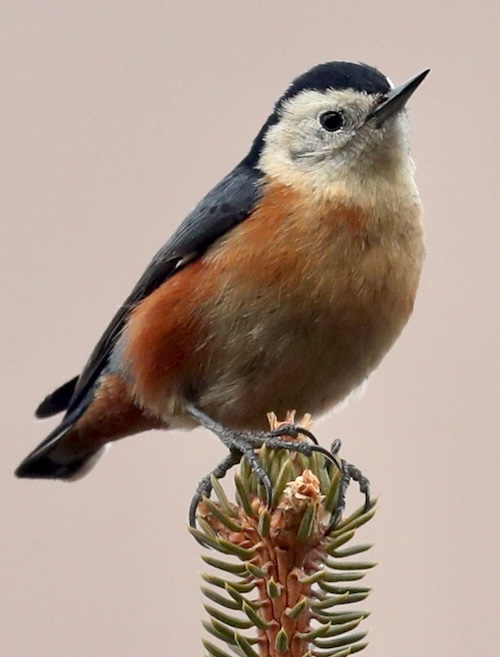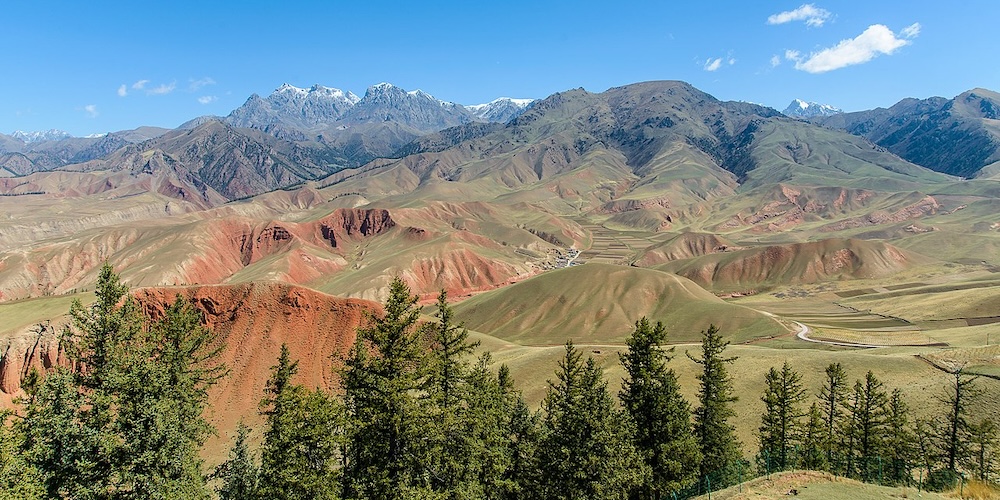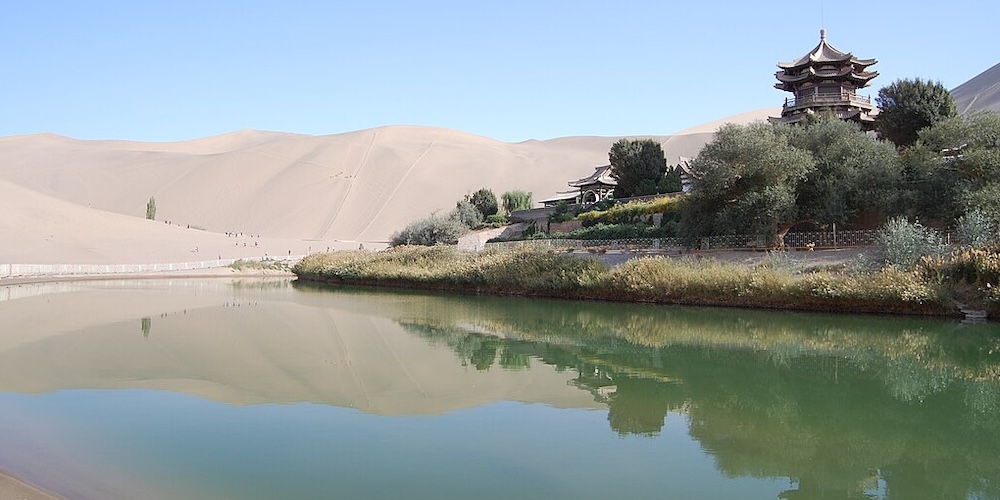Gansu Province

Gansu is a province in Northwestern China. It has a population of 26 million. Its capital and largest city is Lanzhou, lying in the southeastern part of the province with a population of c.3.5 million people. The most common language is Mandarin. Gansu is among the poorest administrative divisions in China. The seventh-largest administrative district by area at 453,700 km2 (175,200 square miles), Gansu lies between the Tibetan and Loess plateaus and borders Mongolia’s Govi-Altai Province, Inner Mongolia and Ningxia to the north, Xinjiang and Qinghai to the west, Sichuan to the south and Shaanxi to the east. The Yellow River passes through the southern part of the province. Part of Gansu’s territory is located in the Gobi Desert. The Qilian mountains are located in the south of the province. The vast majority of its land is more than 3,300 feet above sea level. The province contains the geographical centre of China, marked by a Monument. Part of the Gobi Desert is located in Gansu, as well as small parts of the Badain Jaran Desert and the Tengger Desert.
The Yellow River gets most of its water from Gansu, flowing straight through Lanzhou. However, the area around Wuwei is part of Shiyang River Basin. The landscape in Gansu is very mountainous in the south and flat in the north. The mountains in the south are part of the Qilian Mountains, while the far western Altyn-Tagh contains the province’s highest point, at 19,130 feet. A natural land passage known as Hexi Corridor, stretching some 1,000 kilometres (620 miles) from Lanzhou to the Jade Gate. It is bound from north by the Gobi Desert and Qilian Mountains from the south.

Qilianshan National Nature Reserve – ©Stefan Wagener CC BY 2.0 via Wikimedia Commons
Gansu generally has a semi-arid to arid continental climate with warm to hot summers and cold to very cold winters, although diurnal temperature ranges are often so large that maxima remain above 0 °C even in winter. However, due to extreme altitude, some areas of Gansu exhibit a subarctic climate – with winter temperatures sometimes dropping to −40 °C. Most of the limited precipitation is delivered in the summer months: winters are so dry that snow cover is confined to very high altitudes and the snow line can be as high as 18,000 feet in the southwest.

Grassland – ©陇右甘南 CC BY-SA 3.0 via Wikimedia Commons
Due to its aridness, Gansu is one of the Chinese provinces with smallest per capita area of arable land. Agricultural production includes cotton, linseed oil, maize, melons, millet and wheat. The province is known as a source for wild medicinal herbs which are used in Chinese medicine. However, pollution by heavy metals, such as cadmium in irrigation water, has resulted in the poisoning of many acres of agricultural land. The extent and nature of the heavy metal pollution is considered a state secret.
Birding Gansu
Gansu has 659 species of wild animals, including twenty-four rarities which are under a state protection. Its mammals include some of the world’s most charismatic: giant panda, golden monkeys, lynx, snow leopards, sika deer, musk deer and the Bactrian camel. 580 species of birds have been recorded and is a centre of endemism with many subspecies which occur nowhere else.

Crescent Moon Lake – ©Sigismund von Dobschütz CC BY-SA 3.0 via Wikimedia Commons
Although the west of Gansu is culturally interesting, there is little here for world birders. Dunhuang has made a tourist attraction out of its’ towering sand dunes to the south of town where visitors to Crescent Moon Lake will enjoy the scenery. However, the birds are very European, such as calling Common Cuckoo and Great Crested Grebe on the water. Hoopoes forage around the car park. Further east the town of Zhangye (once known as Kanchow) was home to Marco Polo for a year in around 1275. 60km to the south are the Qilian Mountains, where Horses’ Hoof Temple attracts a lot of visitors. The ancient Buddhist grottoes, carved into solid rock have both Indian and Chinese influences.

Gansu Leaf Warbler Phylloscopus kansuensis – ©Bird-Photo-Tours ASIA
For the birdwatcher, the hills nearby are home to Blue-eared Pheasants, Pine Buntings, Beautiful Rosefinches and five species of redstart, including the striking Chinese endemic, Alashan Redstart. The southeastern part of Gansu (south of the capital, Lanzhou) is wetter and more wooded as one progresses south toward the Min Mountains on the border with Sichuan. The area was worked by the Russian collector Berezhovsky (1886-1887). He discovered for science such enigmatic birds as birds as Snowy-cheeked Laughingthrush (named for V P Sukatschev, his sponsor), Rusty-breasted Tit (originally named after Pere David) and Rusty-fronted Parrotbill (originally named after his fellow Russian, Przevalski).
The closest many birders get to Gansu on commercial birding tours is Rouergai, on the grassy plains of Sichuan. 85km north lies the town of Langmusi, which straddles the Gansu/Sichuan border with two large temples, one in each province. Continuing practice of ‘sky burials’ nearby means that large raptors, including Cinereous Vulture are numerous. A small ravine along the stream at the top end of town boasts Blue-eared Pheasants, Kessler’s Thrush, and Wallcreepers, the last species practically at arms’ length. Back in the main street a backpacker café sells cold beer and ‘Yak Burgers’. Really, what more could a travelling world birder want?
-
John & Jemi Holmes
| johnjemi@gmail.com
https://johnjemi.blogspot.com
-
Number of bird species: 582
(As at May 2025)
Number of endemics: 1
Rusty-throated Parrotbill Sinosuthora przewalskii
-
Avibase
PDF ChecklistThis checklist includes all bird species found in Gansu , based on the best information available at this time. It is based on a wide variety of sources that I collated over many years. I am pleased to offer these checklists as a service to birdwatchers. If you find any error, please do not hesitate to report them. -
E-Bird
PDF ChecklistThis checklist is generated with data from eBird (ebird.org), a global database of bird sightings from birders like you. If you enjoy this checklist, please consider contributing your sightings to eBird. It is 100% free to take part, and your observations will help support birders, researchers, and conservationists worldwide.
-
Birds of China
| By Liu Yang & Chen Shuihua | Princeton University Press | 2023 | Flexibound | 672 pages, plates with 4000 colour illustrations, colour distribution maps | ISBN: 9780691237527 Buy this book from NHBS.com -
Guide to the Birds of China
| By John MacKinnon | OUP | 2022 | Edition 2 | Paperback | 513 pages, 164 plates with colour illustrations; colour distribution maps | ISBN: 9780192893673 Buy this book from NHBS.com
-
Birding info of Gansu
InformationIt is estimated that there are 441 bird species in Gansu Province which 59 species are under national key protection. About 45% among all bird species are Palaearctic ones, and the Oriental species are dominant the south and southeast part of the province...
-
*Protected Areas
InformationSatellite ViewScroll down to Gansu -
BR NNR Baishuijiang
WebpageSatellite ViewBaishuijiang Biosphere Reserve is located in the Wenxian County of Gansu Province. One of the primary aims of this biosphere reserve is the conservation of the Giant Panda (Ailuropoda melanoleuca), and Baishuijiang is one of the regions with the highest Panda populations in China. The area is also important from a biodiversity perspective since it offers a large variance of elevations including evergreen broad-leaved forests and alpine meadows. 180 species of birds have been recorded. -
NNR Gahai Zecha
InformationSatellite ViewThere are abundant resources of wild animals and plants and the grass is abundant too. Many rare migrated animals and birds love the place as their homes and breeding bases. -
NNR Liancheng
InformationSatellite ViewLiancheng National Nature Reserve is located in Gansu Province in the Yellow River Basin. It consists of 47,930 hectares protecting the spruce ecosystem. -
NNR Qilianshan National Nature Reserve
InformationSatellite ViewThe characteristic ecosystem of the Qilian Mountains has been described by the World Wildlife Fund as the Qilian Mountains conifer forests. -
NNR Taohe National Nature Reserve
InformationSatellite View
-
eBird
SightingseBirding This Month
-
China Culture Tour
Local Tour Operator7-day birding itinerary for Gansu
-
2015 [07 July] - Craig Brelsford
ReportBirding Qinghai & Gansu in July
-
Migratory birds land on Gansu lakes to enjoy spring
ArticleFlocks of migratory birds have reached the Sugan Lakes in Aksay Kazak Autonomous County of northwest China's Gansu Province.



